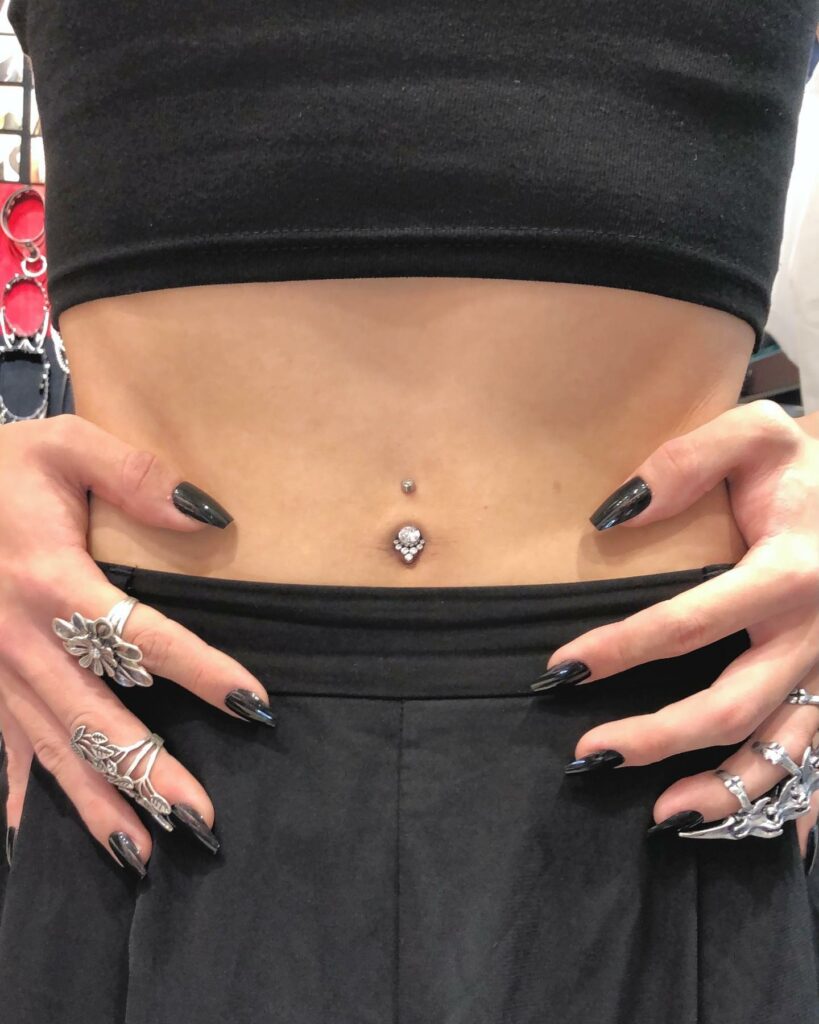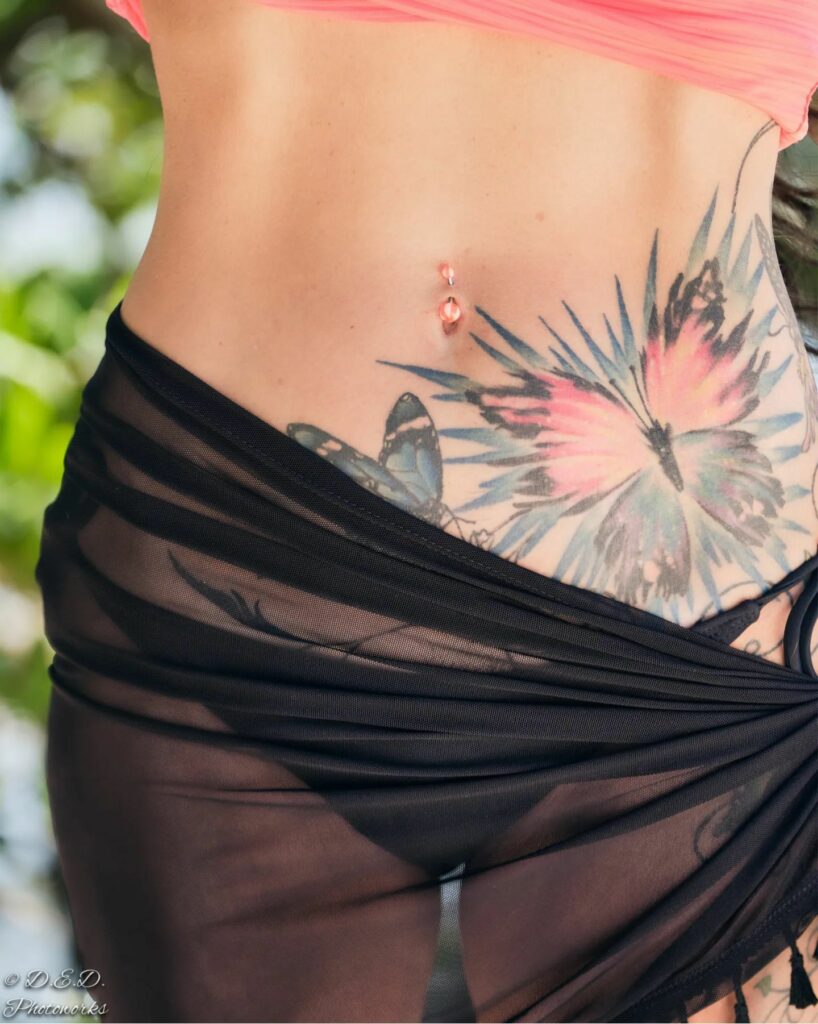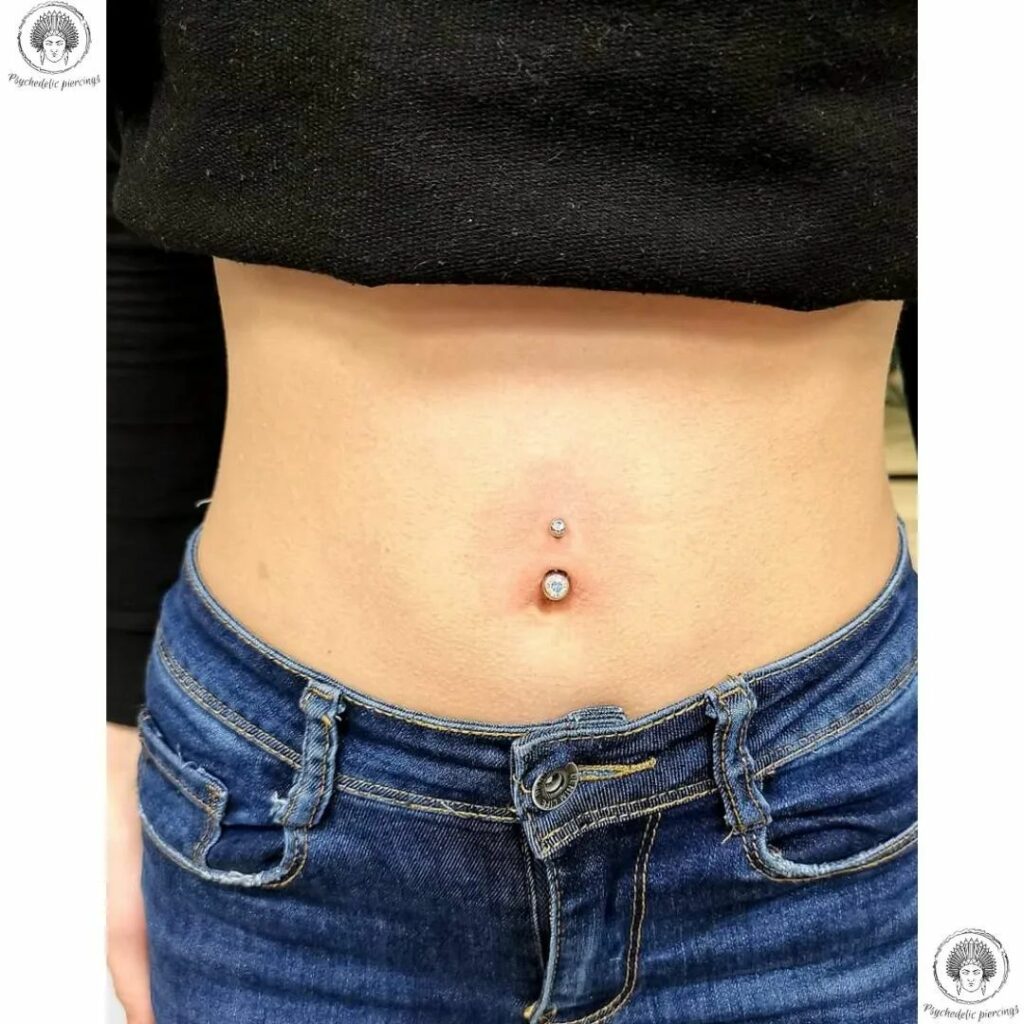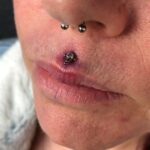Table of Contents
Today, we’re plunging right into the navel of a burning question that’s been floating around my inbox lately: “Tori, when can I change my belly button ring?” Oh, it’s a deceptively simple question, my friends, yet the answer dances on the fine line between aesthetics and health.
This post will unravel the timeline for when to change your belly button ring, the potential dangers of switching too soon, and the correct procedure to follow. We’ll delve into the anatomy, healing process, and how your body communicates its readiness for a change. It’s not rocket science, but it’s just as crucial, I promise you!

I’ll share insights from my two decades of experience in the business, throwing in some insider tips and tricks, and hopefully a few laughs along the way. So sit tight, folks, we’re about to embark on a fascinating deep-dive into the belly of the beast (pun absolutely intended).
How Long Does a Belly Piercing Take to Heal?

A belly piercing could take anywhere from three months to a full year to heal. The healing process can be deceptive; don’t fall for it! You might think your piercing is ready for that gorgeous new ring, only to end up with swelling or redness around the belly button. Patience is your best ally here. You have to give it the time it needs.
My friend Bella once changed her belly ring just two months after her piercing. It looked good, no sign of trouble. But lo and behold, a week later her belly button had a mini revolt, swelling up like a balloon! She was in the healing phase, it turned out. So, remember Bella’s lesson: stick to your aftercare regime and give your body time to heal.
Signs Your Piercing Is Healed
Grab a tissue and dab around the piercing. Any discharge? Nope? Good. That’s a sign you’re on the right path. Check for swelling. It’s quite common when you get a piercing. If you only see a tiny bit of jewelry on either side, your navel might still be swollen and not fully healed.

When your piercing is all healed up, the skin will have the same color as the rest of your belly. A sure sign of success is when the piercing slides up and down easily. That’s your belly button’s green light!
Pro-Tip
Think you’re ready for a new ring? Excellent! But don’t rush off just yet. Schedule an appointment with your piercer and get their approval. They might even help you swap your ring for the first time. Once you’ve done it once with professional guidance, you’ll be a pro at it!

A Few Guidelines to Changing Your Belly Ring
Step 1: Wash Your Hands
Begin by washing your hands with a good antibacterial soap. This is your first line of defense against any unwanted bacteria causing an infection.
Step 2: Clean With Saline
Cleanse the piercing area with a saline solution or alcohol. This step is another safety measure against infection.
Step 3: Sanitize Your Jewelry
Give your jewelry a soak in alcohol to sanitize it. Once it’s clean, wipe it dry and let it dry out fully before insertion. If your jewelry is acrylic or has gemstones, be careful, as alcohol can damage them. In such cases, a good old wash with antibacterial soap works just fine.

Step 4: Remove and Replace
Time to unscrew your jewelry. After removing the ball—the stay—the jewelry should slide out easily. If it’s not budging, your piercing might not be healed or could have healed incorrectly. Immediately replace the jewelry, because the piercing can close up surprisingly fast!
After Changing The Jewelry
Even with all these precautions, you might experience some discomfort, irritation, or even an infection after you change your jewelry. This could be due to a number of factors, but most of the time, it’s manageable.
A salt water solution cleanse each time you add or remove jewelry can be a great preventive measure. This solution can be homemade, or you can opt for a store-bought mixture.
Personally, I’m a fan of the After Inked Piercing Aftercare Spray. It’s vegan, completely free from alcohol and additives, and suitable for all skin types, even the most sensitive. Its easy-to-use, mist-spraying bottle is a bonus. I’ve found it to be a real game-changer in speeding up healing times and easing any lingering pain or soreness. So, maybe give that a shot, folks!
Potential Risks of Changing A Belly Button Ring Too Soon?
Changing a belly button ring too soon, before the piercing is fully healed, can lead to a variety of complications and risks:
- Infection: This is perhaps the most common risk. Fresh piercings are essentially open wounds, and introducing a new piece of jewelry too soon can introduce bacteria into the wound, causing an infection.
- Rejection: Your body may view the new ring as a foreign object and push it out. This process is known as rejection and it can happen if the jewelry is changed too soon or if the new jewelry is made of a material that your body doesn’t accept.
- Prolonged Healing: Swapping the jewelry too early can disrupt the healing process and extend the time it takes for the piercing to heal fully.
- Tearing or Trauma: When a piercing is still healing, the tissue is very delicate. Changing the jewelry prematurely can cause tearing or trauma, which is not only painful, but could potentially lead to scarring.
- Swelling and Irritation: Changing a belly button ring before the piercing has fully healed can lead to increased swelling and irritation. This is because the piercing hasn’t had enough time to build a solid skin tunnel around the jewelry.
- Keloids and Hypertrophic Scarring: These are types of raised scars that can form if a piercing is disturbed during the healing process. Keloids, in particular, can be challenging to treat and may require medical intervention.
All of these risks underline the importance of waiting until your belly button piercing is fully healed before you change the ring. When in doubt, always consult with a professional piercer. They can offer advice based on their knowledge and experience, helping you avoid these potential complications.
Tips If You Have Sensitive Skin
When it comes to sensitive skin, the choice of jewelry material can make all the difference between a comfortable, attractive piercing and an irritated, unhappy one. For those with sensitive skin, hypoallergenic materials are your best friends. These include high-quality metals like surgical-grade stainless steel, titanium, and 14k or higher gold (avoid gold-plated jewelry as the coating can wear off and expose underlying irritating metals). Titanium is often the go-to choice for the most sensitive skin, as it’s incredibly resistant to reactions. Niobium is another great option, similar to titanium but with a wider range of vibrant colors. Bioflex and bioplast materials are also a good choice as they are flexible and less likely to cause irritation. Glass can be an excellent option for healed piercings, particularly Pyrex or borosilicate, as it’s non-reactive and comes in various fun shapes and colors. Always ensure that your jewelry is high quality; cheaper materials may have a higher chance of causing irritation or allergic reactions. Remember, what works for one person might not work for another, so it may take a bit of trial and error to find what suits your body best. Always consult with a professional piercer if you’re unsure!
Conclusion
Alright, ink enthusiasts, we’ve journeyed through the ins and outs of changing a belly button ring. Remember, patience and care are your best buddies throughout this process. Ensuring your piercing is fully healed before swapping out your belly ring is crucial; it’s the difference between a healthy, shiny new piece and potential complications.
Listen to your body, understand the signs of healing, and when in doubt, consult with your professional piercer. Their expert guidance is invaluable! With thorough cleanliness (ahem, antibacterial soap, saline solution, and possibly some After Inked Piercing Aftercare Spray), you’ll be flaunting that new belly bling in no time.
Yes, there are risks involved, but hey, doesn’t every good thing in life come with a few of those? As long as you’re informed and careful, you’re set up for success. Now, go out there and rock your body art journey with confidence. After all, your body is your canvas, and you’re the artist. Happy decorating, folks!




